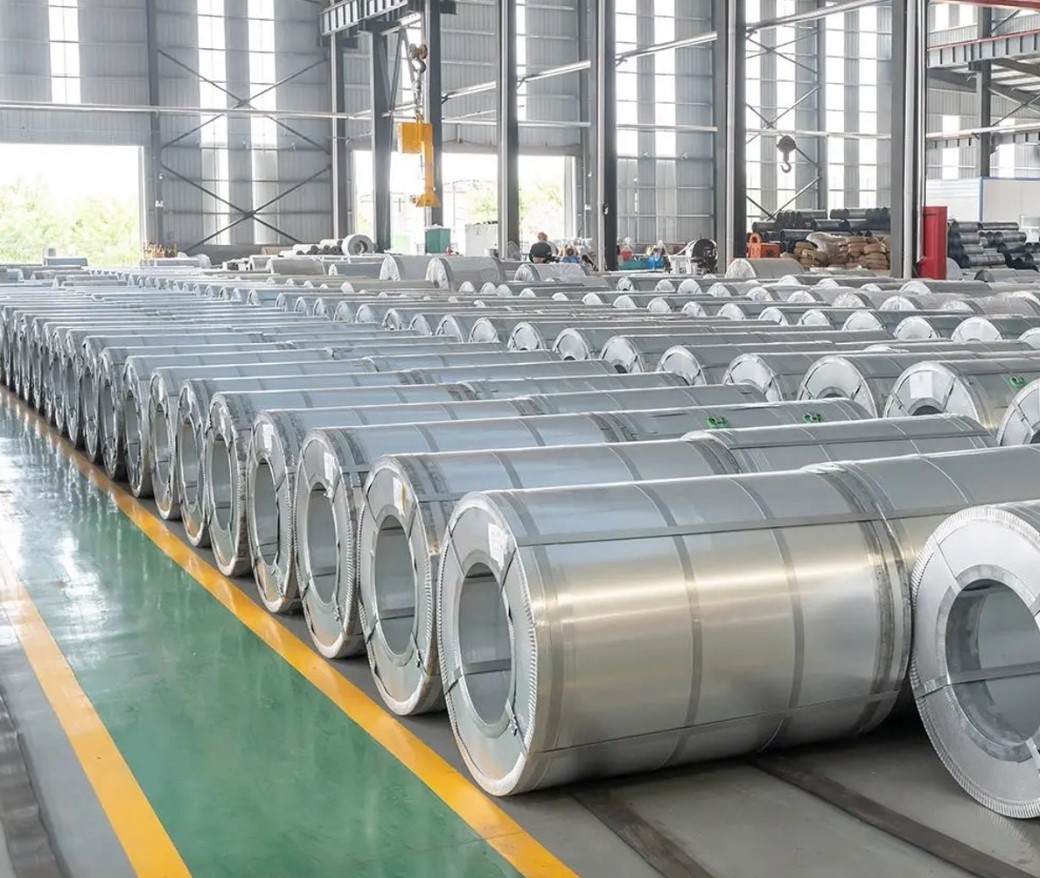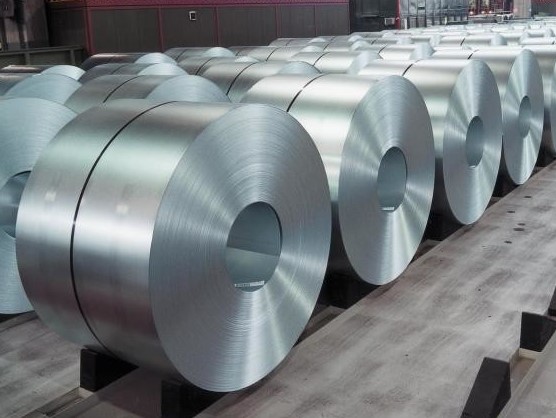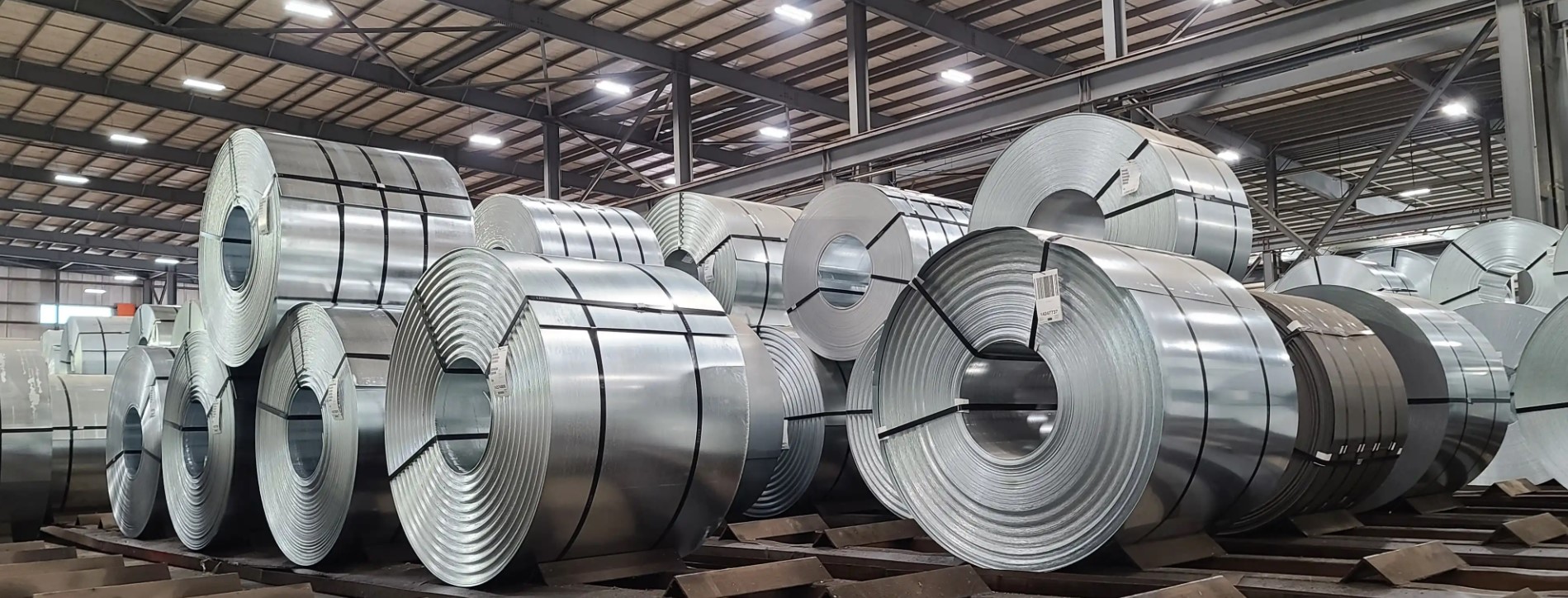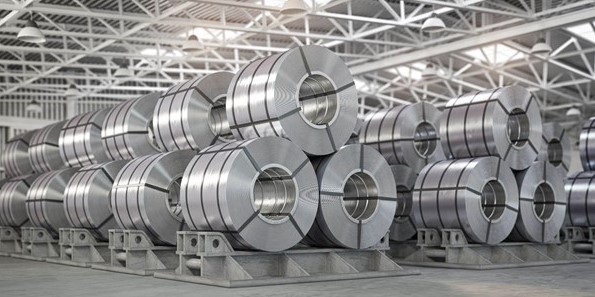At Stavian Industrial Metal, we specialize in delivering high-quality galvanizing zinc solutions designed to enhance the durability, corrosion resistance, and lifespan of metal products. As a critical process in modern manufacturing and construction, galvanizing plays a vital role in protecting steel structures from rust and environmental damage. Our expertise ensures precise coating thickness, consistent surface finish, and superior adhesion, meeting both industrial standards and client-specific requirements. Whether applied in automotive components, infrastructure, or heavy machinery, our zinc galvanizing technology guarantees exceptional performance and long-term protection, helping businesses optimize maintenance costs and extend product life cycles with confidence.
At Stavian Industrial Metal, we understand that galvanizing zinc is more than just a coating process—it’s a scientifically engineered method designed to protect steel from corrosion and extend its operational life. The process involves applying a thin layer of zinc to a metal surface, usually through hot-dip galvanizing or electro-galvanizing. When zinc reacts with oxygen and moisture, it forms a protective zinc carbonate layer that prevents the underlying steel from rusting. This self-healing characteristic makes zinc an ideal choice for corrosion control in harsh industrial and outdoor environments.
The two most widely used methods are:
Hot-dip galvanizing: Immersing steel in molten zinc at around 450°C, creating a strong metallurgical bond.
Electro-galvanizing: Using an electric current to deposit a thin, uniform zinc layer, offering excellent aesthetics and surface smoothness.
Each technique serves distinct purposes. Hot-dip galvanizing is preferred for heavy-duty applications such as structural beams, poles, and outdoor equipment, while electro-galvanizing is commonly applied to automotive panels and precision components where surface appearance is crucial.
Zinc acts as a sacrificial anode, which means it corrodes in place of steel. When a galvanized surface is scratched or damaged, the surrounding zinc corrodes first, protecting the exposed steel area through a process known as cathodic protection. This unique electrochemical mechanism is what gives galvanizing zinc its long-lasting performance.
Additionally, zinc forms several protective layers over time, including zinc oxide and zinc carbonate, which provide an extra barrier against moisture, oxygen, and environmental contaminants. These layers are stable and adhere firmly to the steel surface, ensuring continuous protection even under severe weather conditions.
At Stavian Industrial Metal, our research and testing focus on optimizing this protective performance by controlling zinc thickness, temperature, and immersion duration, ensuring consistent results across all production batches.

The versatility of zinc galvanizing allows for multiple process variations, each tailored to specific material types and performance requirements. The main categories include:
Hot-dip galvanizing is the most durable and widely used technique. The steel is first cleaned through degreasing, pickling, and fluxing before being immersed in molten zinc. This creates a strong alloy bond between zinc and steel, forming intermetallic layers that are both hard and resistant to impact. The outer pure zinc layer then provides cathodic protection, ensuring long-term corrosion resistance.
Advantages of hot-dip galvanizing include:
Exceptional corrosion protection in marine and industrial environments
Minimal maintenance requirements
Extended service life, often exceeding 50 years depending on exposure conditions
Cost-effectiveness for large-scale structural applications
Electro-galvanizing, on the other hand, uses electrolysis to deposit zinc onto steel in a controlled environment. This process produces a bright, smooth surface that is ideal for automotive and consumer products. Although the coating is thinner than that of hot-dip galvanizing, it offers superior uniformity and paint adhesion.
Typical benefits include:
Enhanced surface finish and visual appeal
High precision in coating thickness
Excellent base for paint and powder coatings
Suitable for interior or low-corrosion environments
At Stavian Industrial Metal, we implement both techniques depending on the application, ensuring clients receive customized solutions that meet their performance and aesthetic needs.

The advantages of galvanizing zinc go far beyond surface protection. It provides measurable performance benefits that translate into operational savings and enhanced structural reliability.
Zinc coatings serve as a barrier between steel and the environment, significantly delaying the onset of rust. Even in aggressive conditions such as coastal or industrial zones, galvanized components remain functional and visually intact for decades. The self-healing property of zinc also ensures that small scratches or abrasions do not compromise the overall protection.
Galvanized steel often lasts several decades with little or no maintenance, making it ideal for infrastructure, pipelines, energy systems, and heavy machinery. This durability translates into lower lifecycle costs, reduced downtime, and less frequent replacements—factors that are critical in large-scale industrial operations.
Compared to other coating systems, galvanizing is highly cost-efficient over the long term. Although the initial investment may be slightly higher than paint coatings, the reduced maintenance and longer lifespan provide significant overall savings. Moreover, zinc is fully recyclable, aligning perfectly with global sustainability goals. At Stavian Industrial Metal, we emphasize environmentally responsible production processes that minimize waste and energy consumption.

The versatility of zinc galvanizing makes it indispensable across a wide range of industries. Each sector benefits from the unique combination of durability, affordability, and performance that galvanized steel offers.
In construction, galvanized steel is commonly used for beams, bridges, guardrails, and utility poles. Its ability to withstand exposure to rain, humidity, and pollution makes it an ideal choice for urban infrastructure and coastal projects. Furthermore, the low maintenance requirements contribute to significant cost savings in public works and large-scale development.
The automotive industry relies heavily on galvanizing zinc for protecting car bodies, frames, and components from rust. Electro-galvanized steel ensures a smooth surface for painting while maintaining excellent corrosion protection. This not only enhances vehicle durability but also improves safety and overall quality perception.
Power plants, wind turbines, and solar panel structures often use galvanized steel due to its long-term weather resistance and mechanical strength. In energy distribution, transmission towers and pipelines benefit from zinc coatings that resist corrosion even in challenging conditions, ensuring uninterrupted operation.
At Stavian Industrial Metal, we supply galvanizing solutions tailored to each of these industries, combining advanced processing technology with rigorous quality control to meet international standards.
The reliability of galvanizing zinc depends largely on adherence to established standards and meticulous testing. At Stavian Industrial Metal, we follow global benchmarks such as ASTM A123, ISO 1461, and EN ISO 14713 to ensure consistent coating thickness, adhesion, and appearance.
Quality control procedures include:
Thickness measurement: Ensuring optimal zinc layer depth using magnetic or gravimetric methods.
Adhesion testing: Assessing the bond strength between zinc and steel to prevent flaking or peeling.
Salt spray and humidity tests: Simulating harsh environmental exposure to validate corrosion resistance.
Visual inspection: Detecting surface imperfections such as drips, runs, or uncoated areas.
By maintaining strict process control and documentation, we guarantee that every galvanized product meets the performance criteria demanded by clients across construction, manufacturing, and energy sectors.

At Stavian Industrial Metal, innovation lies at the core of our galvanizing zinc operations. As industries evolve and environmental standards become more stringent, we continuously invest in advanced galvanizing technologies that improve performance, energy efficiency, and sustainability.
One of the most notable advancements is the development of high-performance zinc alloys, such as zinc-aluminum (Zn-Al) or zinc-aluminum-magnesium (Zn-Al-Mg). These coatings enhance corrosion resistance by forming more stable oxide layers that slow down the degradation process. They are particularly effective in coastal or industrial atmospheres, where traditional galvanizing might face faster wear.
Additionally, automation and digital monitoring systems now play a key role in galvanizing facilities. By using sensors and data analytics, the process parameters—such as bath temperature, immersion time, and coating thickness—are precisely controlled. This ensures consistent product quality, reduces material waste, and improves overall production efficiency. At Stavian Industrial Metal, our smart galvanizing lines integrate these technologies to guarantee uniform coating and superior adhesion, even in complex geometries.
In response to growing environmental awareness, eco-friendly galvanizing methods have been developed to reduce emissions and waste. For example, closed-loop flux systems allow the recycling of flux materials, minimizing chemical discharge. Modern filtration and fume extraction technologies capture and neutralize zinc oxide particles, ensuring cleaner air and safer working conditions.
Moreover, the use of lead-free zinc baths has become a major trend. Replacing lead with safer alloying elements eliminates toxic residues while maintaining coating quality. Stavian Industrial Metal proudly implements these sustainable practices, contributing to global efforts toward greener manufacturing and environmental responsibility.
Zinc galvanizing not only protects steel but also aligns with sustainability objectives when managed properly. Zinc is a naturally occurring element that can be fully recycled without losing its chemical or physical properties. This makes it a cornerstone material in the circular economy.
In the construction industry, the use of galvanizing zinc significantly extends the lifespan of steel structures, reducing the frequency of replacements and the associated environmental burden. Every ton of steel protected by zinc contributes to resource conservation and minimizes the carbon footprint over the building’s lifecycle. Additionally, galvanizing processes consume less energy compared to frequent repainting or maintenance of unprotected steel surfaces.
At Stavian Industrial Metal, we collaborate with partners to promote sustainable material usage. Our facilities are designed with energy-efficient furnaces, optimized heat recovery systems, and waste management protocols that adhere to ISO 14001 environmental standards. These initiatives reflect our commitment to responsible industrial development and long-term ecological balance.
The recyclability of zinc is one of its strongest advantages. During the steel recycling process, zinc coatings can be recovered and reused in new applications, creating a continuous loop of material efficiency. Even the by-products of galvanizing, such as zinc ash and dross, can be reprocessed into valuable secondary zinc materials. This not only conserves natural resources but also reduces landfill waste and production costs.
While galvanizing zinc provides robust, long-lasting protection, proper maintenance and periodic inspection are essential to ensure maximum performance over decades of use. At Stavian Industrial Metal, we recommend a structured approach to inspection and upkeep to help clients maintain optimal results.
Inspection should focus on identifying any physical damage, mechanical wear, or localized corrosion. The frequency of inspection depends on environmental exposure—industrial and coastal installations may require annual checks, while indoor or rural structures can be inspected less frequently.
Key areas to assess include:
Coating integrity: Checking for cracks, abrasions, or peeling.
Fasteners and joints: These are often the first areas to show signs of corrosion due to trapped moisture.
Drainage paths: Ensuring that water does not accumulate in recessed areas that could promote corrosion.
Our technical team at Stavian Industrial Metal provides detailed inspection guidelines and training to help clients identify potential issues early, ensuring timely corrective actions.
In most cases, galvanized surfaces require minimal maintenance. However, if damage occurs, localized repair using zinc-rich paint or metallizing spray can restore the protective layer effectively. Regular cleaning with mild detergents helps maintain the surface appearance, especially for aesthetic or architectural applications.
When repainting is necessary, choosing compatible coatings designed for galvanized surfaces is crucial to ensure adhesion and long-term durability. At Stavian Industrial Metal, we supply maintenance solutions that align with international coating standards, guaranteeing a seamless finish and continued protection.
To understand the full value of galvanizing zinc, it’s useful to compare it with alternative corrosion protection methods, such as painting, powder coating, and anodizing.
Painting provides a decorative finish and some degree of corrosion protection but relies solely on surface coverage. Once the paint film is breached, rust can spread quickly underneath. In contrast, galvanized coatings offer both barrier protection and cathodic action, preventing corrosion even if the surface is scratched. Over time, galvanizing proves more durable and cost-effective, especially in outdoor or high-humidity environments.
Powder coating offers aesthetic versatility with various colors and textures. However, it does not provide self-healing protection like zinc. For maximum performance, powder coating can be applied over galvanized steel, creating a duplex system that combines the strengths of both methods—enhanced appearance and extended lifespan.
Anodizing is primarily used for aluminum, not steel. While it creates a decorative and corrosion-resistant surface, it cannot provide the same sacrificial protection mechanism that zinc offers. Therefore, for steel-based applications, galvanizing remains the superior choice for long-term corrosion control.
The future of galvanizing zinc is shaped by innovation, automation, and sustainability. As global industries push for lower carbon footprints, galvanizing facilities are integrating renewable energy sources and low-emission technologies to reduce environmental impact.
Smart manufacturing systems powered by artificial intelligence and the Internet of Things (IoT) enable real-time process monitoring, predictive maintenance, and data-driven quality optimization. These advancements help reduce energy consumption, improve coating consistency, and minimize waste generation.
Another emerging trend is nano-galvanizing, which uses nanostructured zinc coatings to enhance adhesion, wear resistance, and corrosion protection at the molecular level. Although still in early stages of commercialization, this technology holds promise for next-generation protective coatings in aerospace, automotive, and marine industries.
At Stavian Industrial Metal, we continue to explore these technologies, combining our deep expertise with innovation to deliver the most advanced and environmentally responsible galvanizing solutions available.
The demand for galvanized steel continues to grow globally, driven by urbanization, infrastructure development, and the renewable energy sector. The Asia-Pacific region, led by China, Vietnam, and India, remains the largest consumer due to rapid industrial expansion. Europe and North America are witnessing renewed interest as sustainability becomes a key focus in construction and transportation.
Market studies indicate that galvanizing zinc will maintain its critical role in global supply chains due to its balance of performance, cost efficiency, and recyclability. As governments and businesses prioritize long-term asset protection, galvanized steel will continue to serve as a foundational material in modern engineering and architecture.
At Stavian Industrial Metal, we position ourselves at the forefront of this growth by offering premium-quality galvanized products, technical consultation, and reliable logistics services to clients worldwide. Our mission is to help industries build stronger, safer, and more sustainable structures for generations to come.
In conclusion, galvanizing zinc remains one of the most effective and sustainable methods of protecting steel against corrosion. With advances in technology, environmental practices, and global standards, the process continues to evolve, delivering superior performance across industries. At Stavian Industrial Metal, we are proud to be a trusted partner in this field—combining innovation, quality, and environmental responsibility to provide solutions that endure the test of time.
Readers see more
Refined Zinc: Properties, Uses and Global Market Insights
Special High Grade Zinc: Properties, Uses and Market Outlook
High Purity Zinc for Industrial and Energy Applications
Zinc Slab: Essential Material for Industrial and Alloy Production
Address
Website: https://stavianmetal.com
Email: info@stavianmetal.com
